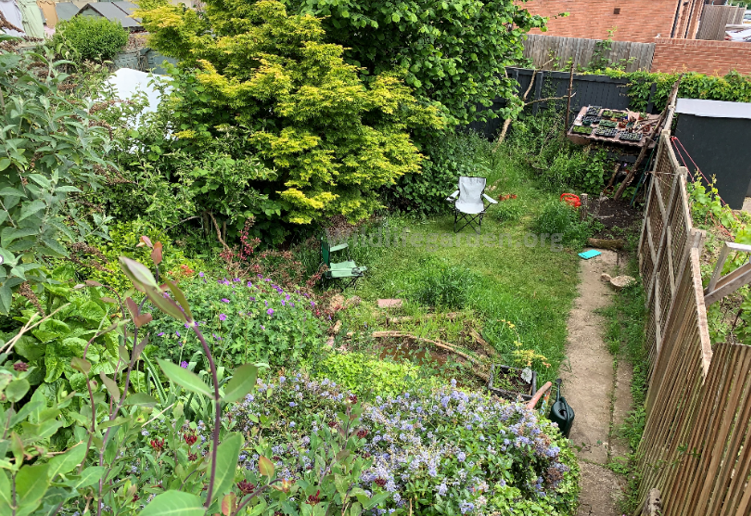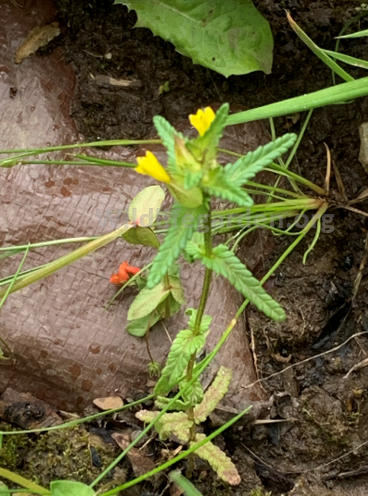Well it’s been a year already since the photograph that has been the front page of this website was taken on the 31st May 2021…

Things have changed a fair bit, looking at the photograph below we can see all the small features that have been added. At the far back right we have the wildlife hotel (the roof of which is acting as a nursery for wildflower plugs). Leaning against the back fence we have the old buddleia branch which supports two small bee hotels (canes in plastic bottles).

Left of the green watering can we have the small wetland patch, which is already well used by tadpoles, various larvae including those of mayflies and mosquitoes. The muddy areas have become invaded by plants such as willowherb, scarlet pimpernel, yorkshire fog grass and other common species. Oddly it’s so far the only location where yellow rattle has appeared, a solitary plant (see below), which we have now added to the species list as it has flowered.

The areas seeded with wildflower seed and grasses are not faring so well (again). The one in front of the wetland area has good numbers of plantains and oxeye daisies, some sorrel and wild carrot and one or two large mallow plants but the grasses have been outcompeted by the existing aggressive species, notably false oat-grass. The area at the back left of the garden hasn’t taken at all, with only one oxeye daisy just about hanging on.
During May therefore we decided to adopt a different approach. We dug the area over in front of he hotel and spent four weeks killing off anything that grew. Then we started the gradual process of adding the contents of seed trays sown with the meadow mix, like adding small plots of turf as shown below. We surrounded it by some of the wildflower plugs which seemed more than ready to take on the big world.

As far as species records for May are concerned, 2022 continued to not let us down…
New Species to the Garden List include; Alder Leaf Beetle, Ochina ptinoides, Woundwort Shield Bug, Rhopalus subrufus, Gorytes laticinctus, Scaloped Hazel, Limnephilus lunatus, Scarlet Pimpernel, False Oat-Grass, Smooth Meadow Grass, Common Cardinal Beetle, Common Cock-chafer, Early Bumblebee, Red Mason Bee, Broad-bodied Chaser. Those in bold have been seen in the garden before, False Oat-Grass is if anything the dominant plant species in the garden. It’s just they have never been confirmed.
As of the end of May the species list now sits at 453 species.
DC 11/06/2022